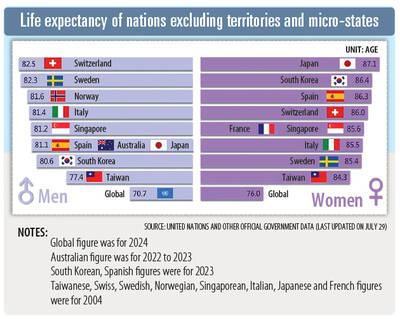The Coast Guard Administration (CGA) yesterday released information on the numbers of personnel it has deployed at coastal stations and defense installations across Taiwan proper and on outlying islands, sparking great interest as it also includes figures for territories in the South China Sea.
In a report, the agency said it had a total of 13,467 service personnel at the end of last month, 6,448 fewer than its highest total of 19,915 in 2000, when the current iteration of the CGA was first established.
With regards to the South China Sea, the report said the CGA has 255 troops in the Pratas Islands (Dongsha Islands, 東沙群島), and 168 troops in the Spratly Islands (Nansha Islands, 南沙群島).
The report also gave information about the CGA’s flotilla stations and patrol offices for its two main task divisions — the Maritime Patrol Directorate-General, which is responsible for all maritime patrols and operations at sea, and the Coastal Patrol Directorate General, which is responsible for land-based operations, primarily the patrolling of harbors, beaches and other coastal areas.
Coast guard personnel based in the South China Sea are under the purview of the agency’s Dongsha Command Post and Nansha Command Post.
The report represents the first time that the CGA has listed personnel deployment information about territories in the South China Sea islands, raising speculation about the timing of the release and the government’s intentions.
Media reports showing that Beijing has installed a powerful radar station on the Cuarteron Reef (Huayang Reef, 華陽礁) in the Spratlys, along with Chinese deployment of surface-to-air missiles in the Paracel Islands (Xisha Islands, 西沙群島), have given rise to concern that tensions in the region are in danger of heating up.
Of the CGA’s personnel, 3,046 or 22.61 percent, work in mainly administrative jobs, including maritime police, customs officers, technicians and other office workers.
The other 10,421 or 77.39 percent, are uniformed personnel.
In its mission statement, the CGA is tasked with ensuring national maritime security, Taiwan’s safety in the high seas and coastal areas, protecting the nation’s oceanic resources, and safeguarding the rights and interests of the people.

The inspection equipment and data transmission system for new robotic dogs that Taipei is planning to use for sidewalk patrols were developed by a Taiwanese company, the city’s New Construction Office said today, dismissing concerns that the China-made robots could pose a security risk. The city is bringing in smart robotic dogs to help with sidewalk inspections, Taipei Deputy Mayor Lee Ssu-chuan (李四川) said on Facebook. Equipped with a panoramic surveillance system, the robots would be able to automatically flag problems and easily navigate narrow sidewalks, making inspections faster and more accurate, Lee said. By collecting more accurate data, they would help Taipei

STATS: Taiwan’s average life expectancy of 80.77 years was lower than that of Japan, Singapore and South Korea, but higher than in China, Malaysia and Indonesia Taiwan’s average life expectancy last year increased to 80.77 years, but was still not back to its pre-COVID-19 pandemic peak of 81.32 years in 2020, the Ministry of the Interior said yesterday. The average life expectancy last year increased the 0.54 years from 2023, the ministry said in a statement. For men and women, the average life expectancy last year was 77.42 years and 84.30 years respectively, up 0.48 years and 0.56 years from the previous year. Taiwan’s average life expectancy peaked at 81.32 years in 2020, as the nation was relatively unaffected by the pandemic that year. The metric

TAKING STOCK: The USMC is rebuilding a once-abandoned airfield in Palau to support large-scale ground operations as China’s missile range grows, Naval News reported The US Marine Corps (USMC) is considering new sites for stockpiling equipment in the West Pacific to harden military supply chains and enhance mobility across the Indo-Pacific region, US-based Naval News reported on Saturday. The proposed sites in Palau — one of Taiwan’s diplomatic allies — and Australia would enable a “rapid standup of stored equipment within a year” of the program’s approval, the report said, citing documents published by the USMC last month. In Palau, the service is rebuilding a formerly abandoned World War II-era airfield and establishing ancillary structures to support large-scale ground operations “as China’s missile range and magazine

Passengers on Taiwan High Speed Rail (THSR) will be required to use headphones and make phone calls in gangways under new “quiet travel” rules starting Sept. 22. THSR Chairman Shih Che (史哲) told media that THSR will run a three-month promotional campaign to ensure widespread adoption of the new rules. Those repeatedly ignoring the guidance face the potential termination of their transport contract, which can result in them getting escorted off the train, according to THSR. Shih shared his hope to cultivate an environment conducive to rest and reading for the train’s passengers, stating that these changes aim to “promote self-discipline” among passengers